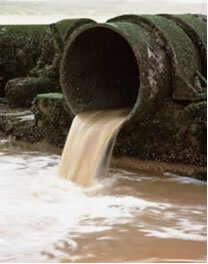THE geological structure of Brazil it is formed by crystalline shields, sedimentary basins and volcanic terrains.
It is quite different from the rest of South America, where there are modern folds, such as the Andes Mountains.
This is because Brazil is located in the center of the South American tectonic plate, that is, in a stable zone that does not have earthquakes.
Geological Structure and Mineral Resources
The classification of geological structures results from the type of rock that compose them, that is, magmatic rocks (crystalline), sedimentary rocks and metamorphic rocks.
Want to know more about rocks, see also the articles:
- Types of Rocks
- mineral kingdom
Formed during the pre-Cambrian period, this type of geological structure is the oldest in Brazilian territory. It is present in approximately 36% of the countries of which the following stand out: Guiana Shield, Central Brazil Shield and Atlantic Shield. The most common mineral resources found in this type of structure are the granite, iron and manganese.
Sedimentary basins are a more recent type of geological structure (formed in the Paleozoic, Mesozoic and Cenozoic eras). They cover almost 60% of the Brazilian territory, of which the following stand out: Amazon, São Francisco, Pantanal, Parnaíba and Paraná sedimentary basins.
They are depression terrains where several sediments were deposited and compacted for thousands of years. The most common mineral resources found in this type of structure are the Petroleum, O mineral coal it's the natural gas.
Volcanic Terrains
About 5% of the territory has this type of structure. Currently, Brazil does not have any active volcano, however, it had volcanic activity, about 2 billion years ago.
Some islands were formed through the volcanic process, among which the following stand out: Fernando de Noronha (Pernambuco) and Trindade (Rio de Janeiro). The most common minerals found in this type of structure are made up of magmatic (or igneous) rocks, which are formed by lava from the volcano: diabase and basalt.
The relief of Brazil is closely related to the geological formation of each location. They are classified into plains, plateaus and depressions.
While the plains occupy 5% of the territory, formed by rocks of sedimentary origin, the plateaus and depressions cover 95% of the country, with the presence of rocks of crystalline and sedimentary origin.
- plains: flat terrain and not very high. They are classified into: coastal plains (action of the sea), river plains (action of a river) and lake plains (action of a lake).
- plateaus: these are elevated terrains classified as: sedimentary plateau (formed by sedimentary rocks), crystalline plateau (formed by crystalline rocks) and basaltic plateau (formed by rocks volcanic).
- depressions: sloping terrain and below ground level. They are classified into two types: absolute depressions, located below sea level; and relative depressions, located above sea level.



